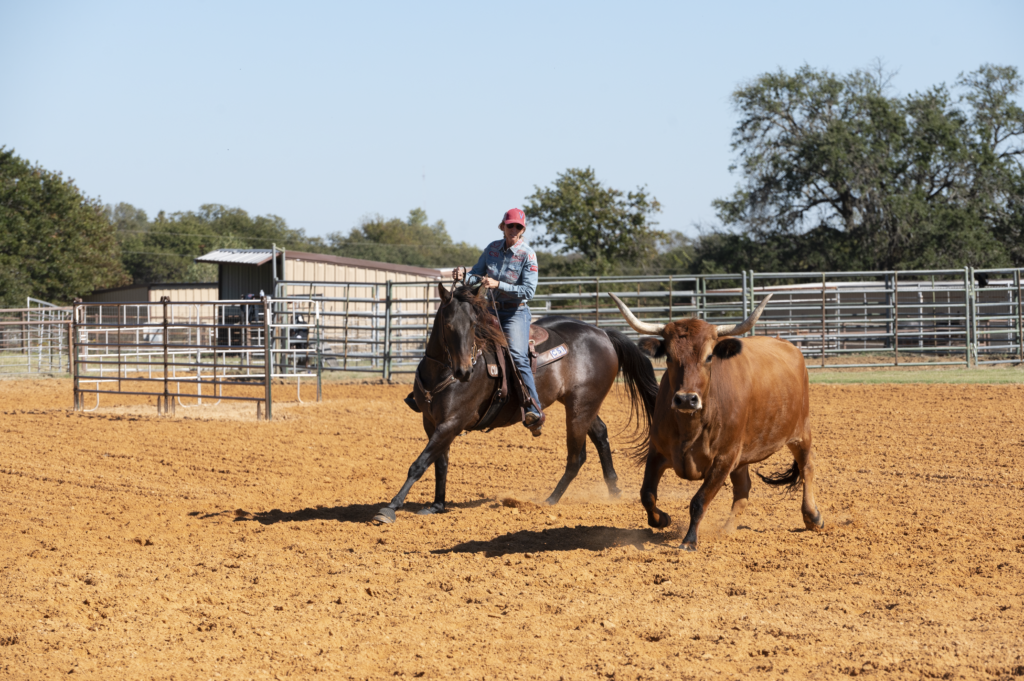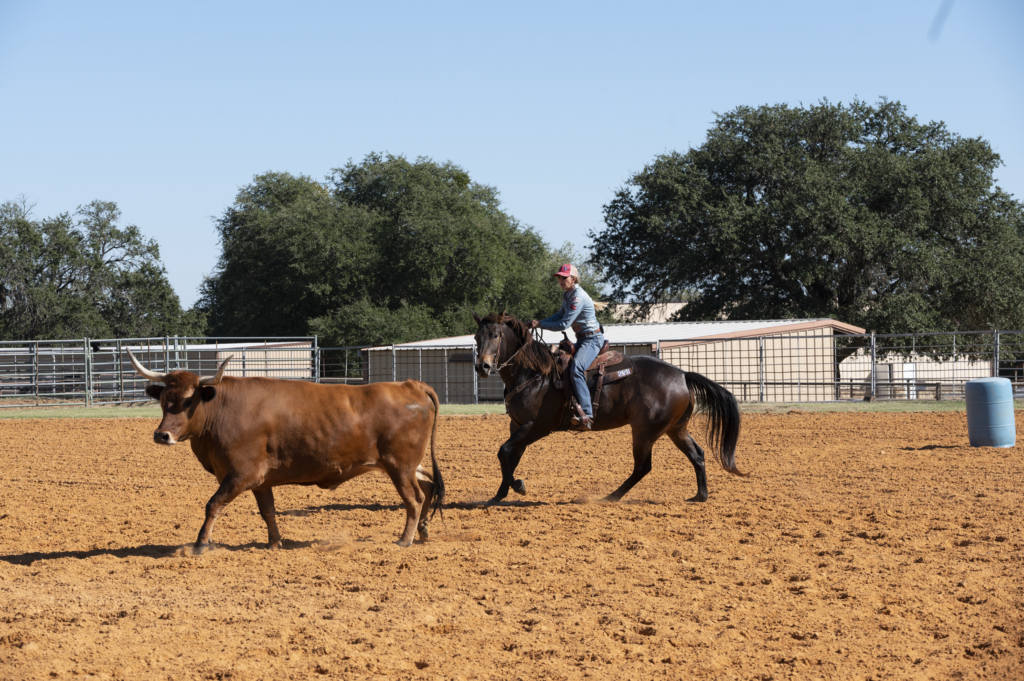The problem with a barrel and the barrel pattern is it never moves. And your horse instinctively wants to follow something. Working cattle allows your horse to chase something and provides an alternative to working on a stationary object. So, tracking cattle is good to get your horse’s feet moving and to work on his suppleness and body position.
If you have access to cattle, you’ll want to use steers that move while you track them. If your cattle don’t move, consider an alternative animal, such as a burro or donkey, or you could ask a friend to pull a dummy behind an ATV. Whatever you use, you want to make sure that it captures your horse’s attention enough, to keep him in a focused mindset, so that you can work on positioning.

To start out, you’re just going to follow the cattle around the arena. This works to start to take your horse’s mind off an object that’s stationary all the time and allows him to keep thinking about the next cue as he tracks the cattle. As you’re following the steer, do some maneuvers—you want to make sure your horse is still doing what you want him to do. If there are things you know your horse needs to work on in the pattern, work on those things here. Pick up his shoulder, sidepass over away from the steer and then sidepass over back behind the steer. If you want to push the shoulder out, pick up the shoulder and move him around, then get back behind the steer.
When you get to a good stopping position, stop and back up—this is excellent for a horse that is pushy on the bit. You want to stop when the steer is still moving, so you can back your horse away from the steer.
As you go back to tracking, work on controlling your horse’s shoulders. Start to move the steer in a circle. To do this, cue your horse to walk in a circle with your hands in a driving position. Staying to the outside of the steer and remaining at the rear quarter, move the steer around in the circle with you. As the steer tries to move out of the circle, this is where you practice moving your horse’s shoulders—pick up your horse’s shoulder as you redirect the steer back into the circle.
Now, you’ll want to work the other side [of the horse’s body] in a circle. To keep your horse’s body under control, walk up to the fence and ask your horse to work off the fence as you switch directions.
Repeat tracking the steer in a circle going the opposite way. By now, the steer is starting to tire, and you should feel like you have control of your horse’s shoulders, and they feel supple.

Once the steer is tired, you can begin to work your horse around him as if he were a stationary object—like a barrel. As the steer stands, begin to lope circles around it. You want your horse to have his nose tipped in slightly and looking at the steer with your hand in a driving position. When your horse completes a nice circle, turn him on his haunches away from the steer and lope the opposite direction until he lopes a nice, correct circle. After you stop, ask your horse to back up and then allow him to sit and relax.
This exercise can be modified to fit what you need to work on with your horse. If your horse is pushy and wants to run toward the steer, focus on staying back behind the steer completely while including a lot of stopping and backing. When you want to go back to the steer, don’t let your horse rush forward. However, if you need to work on getting your horse to fire out of his turns, chasing after the steer is an excellent way to encourage quick, forward momentum. Work on switching directions with the steer and making sure your horse keeps up as the steer moves around the arena.
Watch training videos with Cheyenne on BarrelRacing.com!





